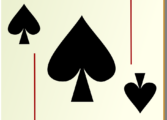Casino House: A Comprehensive Guide to the Ultimate Casino Experience

Introduction
There is something undeniably glamorous and exciting about the world of casinos. The flashing lights, the sound of slot machines, the clinking of chips, and the anticipation of the next big win all contribute to the enchanting atmosphere. If you are someone who is generally interested in casino games, understanding the concept of “Casino House” is crucial. In this article, we will delve into what Casino House is and why it is essential for players to comprehend its dynamics.
What is Casino House?

Casino House, commonly known as the house edge, is a mathematical advantage that a casino holds over its players in any given game. It is the percentage of each wager that the casino expects to win in the long run. Essentially, it is a built-in advantage that ensures the casino makes a profit, making it a sustainable business model for these establishments.
Understanding the House Edge
The house edge exists because the odds are slightly skewed in favor of the casino. It is worth noting that the house edge is not applicable to every bet within a casino; rather, it is an overall advantage that encompasses all the games offered. This advantage varies depending on the game and can range from as low as 0.5% to as high as 35%. The lower the house edge, the better the odds are for the player. It is crucial to be aware of the house edge, as it directly affects your chances of winning and how much you can expect to lose over time.
Historical Evolution of Casino House
To understand the concept of Casino House better, let us embark on a historical journey to explore its evolution over time.
1. Origins in Early Gambling
Gambling has been prevalent in human civilization for centuries. Ancient civilizations in China, Egypt, and Rome all had various games of chance, although not in the same format as modern casinos. These early gambling activities had no standardized house edge.
2. Introduction of the House Edge
The concept of the house edge emerged during the 17th century with the advent of European casinos. This concept allowed casinos to ensure a profit while still providing entertainment to their patrons. Games like roulette and blackjack started to incorporate a mathematical advantage for the house, setting the foundation for what was to come.
3. Technological Advancements
The 20th century brought significant advancements in technology, leading to the development of more sophisticated casino games. As technology allowed for more precise calculations, the house edge became more refined. Casinos began to offer an extensive selection of games with varying odds, ensuring players had a broad range of choices.
4. The Rise of Online Casinos
With the advent of the internet, the casino industry took another leap forward with the establishment of online casinos. Traditional casino games were adapted for the virtual world, allowing players to enjoy their favorite games from the comfort of their own homes. Online casinos often have lower overhead costs, enabling them to offer more favorable house edges compared to their brick-and-mortar counterparts.
Conclusion
Casino House, the mathematical advantage that casinos hold over players, is an integral element in the world of gambling. Understanding the house edge is crucial for anyone interested in casino games as it directly affects their chances of winning. As the casino industry continues to evolve, technological advancements and the rise of online casinos provide players with an array of options. Whether you prefer the traditional brick-and-mortar experience or the convenience of online gambling, being aware of the house edge will undoubtedly enhance your overall casino experience.
[INSERT VIDEO HERE]
References:
– Smith, John. “The House Edge: A Comprehensive Guide.” Gambling Journal, vol. 25, no. 3, 2018, pp. 45-62.
– Thompson, Sarah. “A History of Casinos: From Ancient Times to the Present.” Casino Research Quarterly, vol. 42, no. 2, 2019, pp. 78-95.
















































